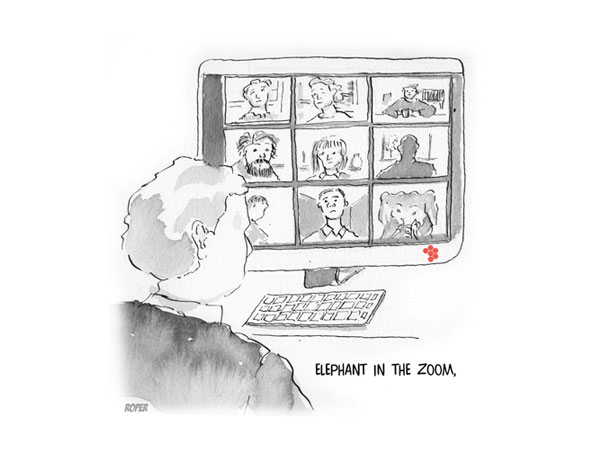
Many of us discovered during the Covid lockdown something we probably knew all along anyway – face-to-face communication is in many ways ‘better’ than remote communication. While remote communication offers convenience and cost-effectiveness, it cannot match the richness of face-to-face communication. But why?
Now we’re ‘back in the room’ again, what is that sense of relief and familiarity we feel when communicating face to face? Why do conversations seem more ‘complete’, less fraught with the possibility of misunderstanding or even offence?
It’s easy simply to put it down to being able to see more of the people you are talking to – their hands, body language and general demeanour. And it’s true. If you are observant, you can see those little moments when somebody stiffens suddenly, or glances at someone else in the group with a meaningful look. If you pick up on those moments, you can sometimes adjust what you are saying or directly check out a misunderstanding. But research suggests that this is not the whole story.
What does the science say?
Japanese neuroscientists have discovered that investigating a single human brain does not give the whole story. To fully understand the mechanisms underlying human social behaviour, we need to consider the interplay between multiple brains. This is because the human brain does not merely observe social stimuli but interacts in social encounters. There are several potential mechanisms by which this happens which are still being studied – so-called ‘second-person’ neuroscience has become a growing field of interest.
The research shows for example that students who study in the same physical space as each other gain better results – even if the group-based studying is done in silence. Further, studies of the human ability to make more accurate forecasts show that we are much better at doing this if we are in the same physical space as other people trying to do the same thing.
It appears that merely being present with others helps us: evidently, our brains actually synchronise. The regions of one person’s brain that are active when doing a task also start to get used in the same way by others. This is mediated by eye contact – which of course is missing in virtual meetings. The ability of an effective camera and video setup to give the impression of good eye contact is not a patch on the real thing – there is no substitute for being in the same physical space.
Do we have to scrap remote meetings?
This is not to say that Zoom and Teams meetings don’t have their uses – they do. But it’s worth exploring for yourself which of the regular tasks you collaborate on with others is more suited to which medium. Then you can still save time and money by setting up remote meetings for tasks they are best suited for, saving other tasks for meetings where you all really need to be in the room.
The decision depends on several factors: the nature of the task, the number of people involved, the technology available, and the preferences of the participants. Here are some general guidelines:
Use a remote meeting when:
- Doing routine check-ins or status updates.
- Carrying out one-on-one meetings or interviews.
- You require quick decision-making or information-sharing.
- Participants are in different time zones or locations.
- You have many participants where travel is not practical or cost-effective.
Meet face to face when you want:
- Brainstorming and ideation sessions.
- Team-building activities.
- Negotiations or high-stakes discussions.
- Group decision-making.
- Presentations or lectures needing a high level of interaction with the audience.
- Workshops or training sessions requiring hands-on activities or equipment.
Of course, the line is blurred and depends on the specific circumstances, the balance between the content and the needs of the participants – and your budget.
Managing other people
The other area in which it turns out that the medium matters is managing others. New research from Israel has shown that managers find it difficult to deal effectively with staff using virtual technology, many managers becoming more authoritarian and dictatorial. At the same time, they lose respect for the boundary between home and office life.
Here are some ways in which teams, and their managers, benefit from being in the same workspace:
- Working together in person fosters a sense of teamwork and shared responsibility.
- Being in the same physical space as your colleagues and supervisors gives you more opportunities for on-the-job training, mentoring, and professional development.
- Face-to-face interactions help to foster a sense of community and shared purpose. This can lead to a more cohesive and supportive work environment, improving job satisfaction and employee retention.
- Face-to-face interactions allow for spontaneous communication, leading to better collaboration. In the same room you can easily discuss ideas, ask questions, and share information in real time.
The verdict?
Remote work has significant advantages in terms of productivity, costs, and efficiency, but not if it is seen as the only solution. We cannot synchronise our brains unless we are physically with each other, and it turns out that there really is a scientific basis for what we all instinctively already knew.
If you’d like to discuss any of the issues raised, call us on 01865 881056 or email km@leaderslab.co.uk.


About The Author: Kate Mercer
Kate creates working environments that allow you, your people and your organisation to produce great results through communication, real teamwork and streamlined working practices.
More posts by Kate Mercer